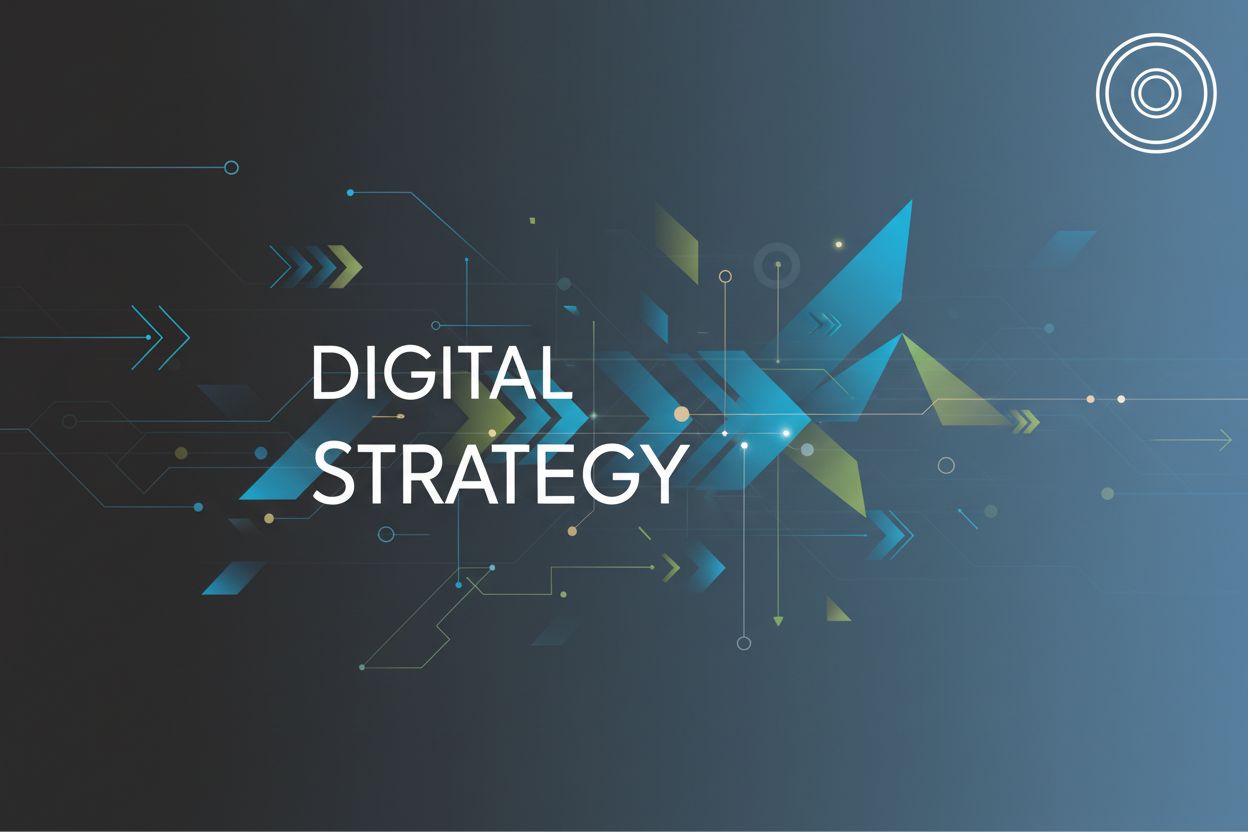Location-Based Marketing: The Ultimate Guide
TL;DR
What is Location-Based Marketing?
Location-based marketing, huh? Sounds kinda sci-fi, right? But honestly, it's just about tapping into that little device practically everyone's glued to these days--their smartphone.
- At its core, location-based marketing is reaching folks with messages tailored to where they are. Think of it as a digital tap on the shoulder, "Hey, there's a sale at the store right around the corner!"
- It uses data from GPS, wifi, and even cell towers to figure out where you are, or where you were. It's like, imagine the possibilities, from sending a coupon when someone is near your coffee shop, to, reminding them about a product they looked at online when they walk past your store.
- It's not just about sales, though. Location data can help improve customer engagement and building better user experience. Think about how Uber knows where you are when you land in a new city? That's location-based marketing, making your life easier.
It's pretty wild how much location data is out there, thanks to our phones, cars, even watches, tracking our every move. And, it's this data that's enabled marketing teams to gain greater context into how to reach customers and improve their overall experience.
- Think beyond just the phone. Even cars are connected now, offering location insights.
- It's not just about where someone is, but when they are there. Understanding a customer's habits is key.
So, how do you actually do location-based marketing? Well, there's a few ways, and some are more precise than others. Let's dive into those next, shall we?
Key Location-Based Marketing Techniques
Alright, so we've talked about how location-based marketing works, but what can you actually do with it? Turns out, quite a lot. Ready to dive into the nitty-gritty?
Geotargeting is kinda like casting a net, but instead of fish, you're catching potential customers, or, well, at least getting your message in front of them. It's all about serving up personalized content based on where someone is.
- Think IP addresses: As was mentioned earlier, it's how the internet knows where to send your cat videos. But, every device has one, and those IPs can be traced back to a general location, like a country, region, or even a zip code.
- Personalization is the name of the game. It ain't just about ads. Think about localized news, weather updates, or even event notifications. You know, stuff that's actually useful.
- Examples? Google's search results are a classic. Search "pizza," and it's gonna show you places nearby, not in another state.
Ever walk into a store and suddenly get a notification about a sale? That's probably geofencing at work. It's like drawing a digital fence around a real-world location.
- GPS to the rescue! Geofencing uses GPS to create these virtual borders. When a user with a location-enabled device crosses the line, boom, they get a message.
- Think big... or small. Geofences can cover entire shopping malls, stadiums, or even just the area right outside a store. It all depends on what you're trying to do.
- Retailers love this tactic. Imagine you're browsing online for a new pair of shoes, and then you walk past a shoe store and get a notification that they have the exact pair you were looking at. Sneaky, but effective.
Now, if you want to get really specific, you need to bring in the beacons. These little gadgets use Bluetooth or wifi to connect with devices in a super-small area.
- Opt-in is key. Bluetooth needs to be on, and users need to have the right app installed. But, that means you're talking to a super-engaged audience.
- Indoor tracking is now a thing. Because beacons can track folks inside a building, you can target offers based on what aisle they're browsing.
- Picture this: you're in a grocery store, and as you stroll down the ice cream aisle, you get a coupon for ice cream cones. That's beacons in action.
Good old mobile targeting. This is all about hitting folks with ads on their phones, and making sure those ads are relevant to their location.
- Segments are your friend. Mobile ad platforms let you create segments based on location, demographics, interests, you name it. You could segment users who are frequent visitors to a certain type of store, or those who live within a 5-mile radius of your business.
- Personalized connection. This approach lets you talk directly to users on their devices, which means a more personal connection. For instance, if a user has a history of browsing hiking gear online and is currently near a sporting goods store, you could send them a push notification with a special offer on hiking boots, or even directions to the store's hiking section. You can also tailor messages based on their past interactions, like sending a follow-up offer for a product they added to their cart but didn't purchase, if they are detected near the store.
Okay, this one's a bit cutthroat. Geo-conquesting is about using location data to lure customers away from your competitors.
- GPS is the weapon of choice. Target users near your competitor's locations, and hit them with an offer they can't refuse.
- Winning market share, one customer at a time. It's about getting folks who are already shopping for something to choose you instead.
- Burger King famously did this, offering a one-cent Whopper to folks near McDonald's. Savage; I like it.
So, that's a quick rundown of some key location-based marketing techniques. As you can see, each one has its strengths and weaknesses, and the best approach depends on your goals. What's even more interesting is how these techniques are evolving with new technologies, so let's talk about some of the current trends.
Reasons to Use Location-Based Marketing
Okay, so, why bother with location-based marketing in the first place? I mean, isn't it kinda creepy?
Well, yeah, it can be if you're not careful. But, the benefits, if done right, are kinda huge.
Getting the right message to the right person is now easier. Instead of blasting out generic ads, you can tailor them to folks nearby, which will grow awareness and customer relationships. For example, a local bookstore could send a notification about a new author signing to people within a mile of the store, fostering a sense of community and encouraging repeat visits. This personalized approach makes customers feel valued and understood, strengthening their connection to the brand.
You're not wasting money on ads no one sees. Because you're only targeting folks in a specific area, you ain't gonna waste money showing ads to people who can't even use your services.
You can offer personalized deals when it matters most. Imagine, sending a coupon for a free appetizer when someone walks past your restaurant at lunchtime? That's, what I call, effective marketing.
Think about healthcare, for example. Imagine a hospital sending out a push notification to people living near a clinic, or near a hospital, reminding them to schedule their annual flu shot.
Or, how about a financial institution sending notifications to customers when they're near an atm? It's pretty smart, if you ask me.
So, yeah, location-based marketing can be a game-changer. But, there are some things you need to consider before you jump in, which we'll cover next.
Trends in Location-Based Marketing
Okay, so, you're probably wondering, like, what's even happening in location-based marketing right now? It's not just about coupons anymore, that's for sure.
Remember Pokémon GO? That's kinda where things are headed.
- Brands are trying to create experiences based on where you are.
- Think about pointing your phone at a street and seeing nearby restaurants pop up in augmented reality -- Yelp basically does this now.
Yeah, companies are throwing money at this stuff.
- Retailers are, like, really into location-based marketing.
- I saw some report saying nearly 60% of them were planning to spend more back in 2019 ([PDF] US consumers in 2019 are ready to spend—but wisely - McKinsey). The exact current percentage isn't readily available, but given the continued growth in mobile usage and personalized marketing, it's highly probable that adoption rates have only increased since then.
- The thing is, they're also gettin' careful about user privacy, because no one wants to be "that creepy brand".
Those little beacon things? Yeah, they're still kickin'.
- They're gettin' used for super-targeted messages in small areas.
- Apple and Google are doing stuff with this tech, like, always. For instance, Apple's iBeacon technology allows apps to trigger actions based on proximity to beacons, and Google's Nearby Notifications can alert users to relevant places or events as they move around.
This is where it gets really interesting.
- It's about using location data and time-sensitive insights to talk to customers. These insights could be things like knowing a user is frequently near a coffee shop during their morning commute, or that they tend to visit a particular park on weekends.
- Think, like, targetting a few people in a small area—a street, maybe?
- You get to make really personalized campaigns that are actually easy to measure, which is nice.
That's where it's kinda at right now. Next up? We'll dive into some of the privacy stuff.
Privacy Concerns in Location Based Marketing
Okay, let's talk about the not-so-fun part of location-based marketing: privacy. I mean, it's great to send targeted ads, but nobody wants to feel like they're being stalked, right?
Creep Factor: It's a real thing. People get uneasy when they feel like a business know too much about their movements. It's a fine line between a helpful nudge and "big brother" vibes.
Data breaches: And let's not even get started on the nightmare scenarios—like a data breach exposing everyone's location history. Yikes!
It's not just about good vibes, though. There's actually laws about this stuff.
gdpr: The General Data Protection Regulation is a big deal in the European Union. If you target folks in the EU, you have to get their explicit permission to track them, and you gotta be super transparent about what you're doing with their data.
Compliance: GDPR isn't just some suggestion; it is a big deal. You should always consult with your legal team, before you roll out a location-based marketing program, to make sure you're following all the local laws.
So, what can you do to be ethical and effective? We'll dive into how to mitigate these concerns and ensure you're respecting user privacy.
Getting Started with Location-Based Marketing
Okay, so you're ready to jump into location-based marketing? That's cool, but hold up a sec. It's not just about firing off ads and hoping for the best. There's a few things you need to nail down first.
Privacy First, Always - Seriously, get your legal team involved before you do anything else. You gotta make sure you're not steppin' on any toes with data collection and usage. It's easy to freak people out if you're not transparent, you know? This means clearly outlining your data collection policies, obtaining explicit consent, and providing easy opt-out options.
Goals, Goals, Goals - What do you actually want to achieve? More foot traffic? Steal customers from competitors? Something else? I mean, without clear goals, you're just throwin' money at the wall.
Pick Your Weapon (wisely!) - Geofencing, beacons, mobile targeting... what's gonna work best for your goals? It's a bit like pickin' the right tool out of your shop, you know? If you're trying to get folks into your store, geotargeting might be the way to go, but if it's about conquesting, you'll need something else.
Measure Everything! - As was mentioned earlier, looking at data is key. What worked? What flopped? Use geo-zone analytics and combine it with marketing attribution analytics—to see where conversions are really coming from. Attribution models help you understand the customer journey, not just the final click. It's about understanding all the touchpoints that led to a conversion, not just the last one. This means looking at everything from initial ad impressions to in-store visits.
So, there you have it. A few key steps to get you started. Just remember, privacy, planning, and measurement are your friends. Up next, let's look at some tips on how to make your brand stand out.
Examples of Brands Using Location Based Marketing
Location-based marketing, huh? It's not just for coupons anymore, you know. A lot of brands are using it in cool ways!
Here are a couple examples:
- Adidas used location-based search ad extensions; and, man, did it work! They saw a 680% increase in ROI. It's all about getting folks into the closest store.
- Whole Foods got kinda cutthroat with geofencing, as well as, geo-conquesting. They targeted folks at competitors, which led to a 4.69% conversion rate—way above the national average of 1.43%.
Next up, let's talk about combining location data.
Combining Location Data with Other Data Points
Location data? Super useful, but it's not the whole story, ya know? You gotta pair it with other stuff to really get inside your customer's head.
- Gotta look at the big picture. Don't just track where they are, but why they are there. Like, what's their history? This means combining location data with purchase history, website browsing behavior, and demographic information.
- Think about attribution models like they mentioned earlier. These models help you understand the impact of various marketing channels on conversions. It's not just about location, it's about everything that influenced the customer's decision. For example, did a geofenced ad lead to a website visit, which then led to a purchase? Or was it a combination of factors?
- Siloing location data? Big mistake. It should feed into, like, everything you're doing. It should inform your CRM, your email marketing, your social media strategy – everything.
Next, let's talk about making sure your brand isn't just another face in the crowd.
Additional Tips and Resources
Okay, wrapping things up! Hopefully, you're feeling ready to rock some location-based marketing. It's a wild world, but also, a super powerful one.
- Dig into these examples; they show how it's done.
- Stay ethical, and, don't forget, user privacy is key—or, you will see gdpr.
- Keep learning, because this stuff never stays still!




